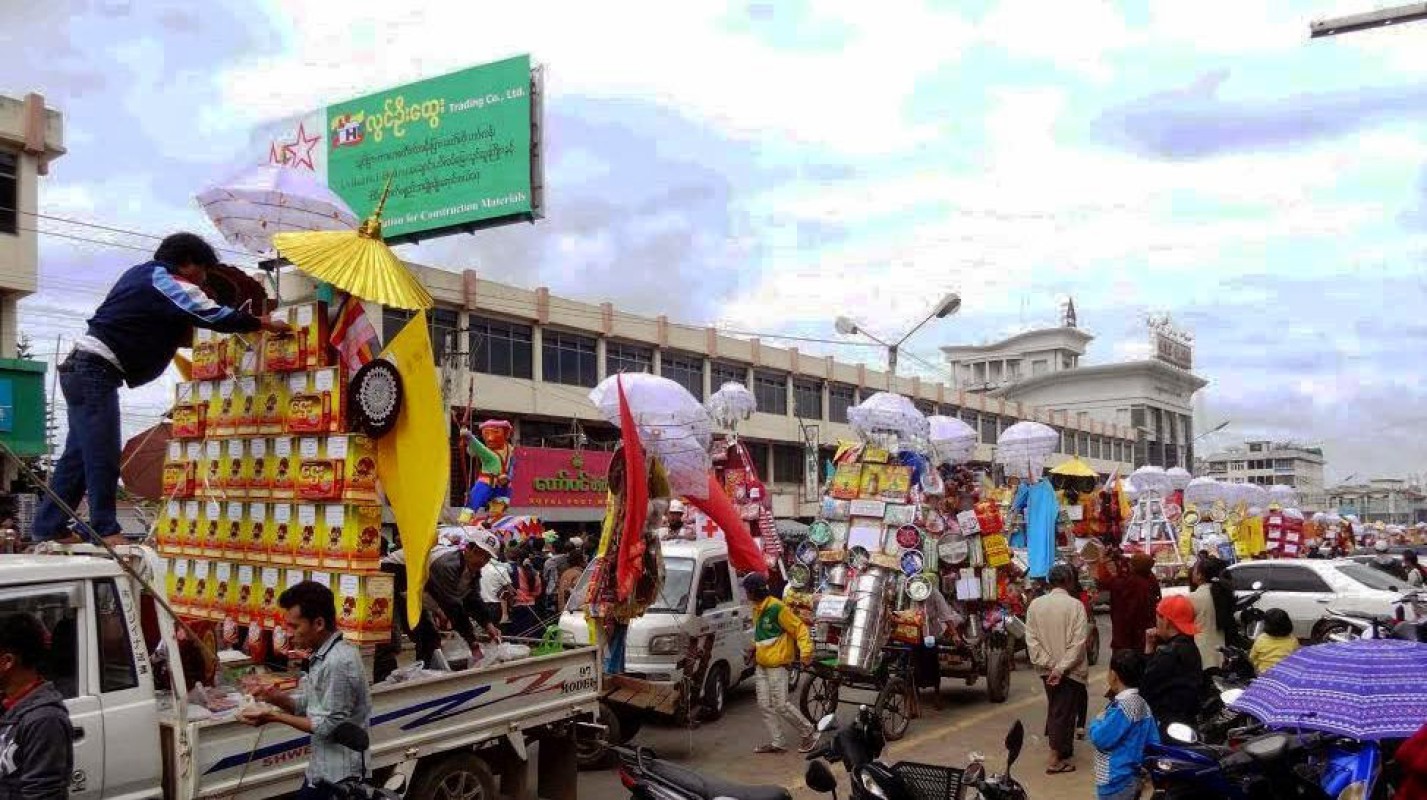Traditional Kathina Ceremony highlights collective buddhist devotion and merits

54

Thiri Khit Oo (NP News) - Nov 29
The Kathina Ceremony (also known as Kahtain) is a significant Buddhist tradition in Myanmar, celebrated annually during the month following the end of Tazaungmon in the Myanmar Lunar Calendar. This merit-making festival allows Buddhist devotees to offer robes and other requisites to monks, reflecting a spirit of generosity and devotion. Rooted in the Theravada Buddhist tradition, the ceremony is celebrated enthusiastically across the nation. The Kathina Ceremony embodies the Buddhist values of generosity, detachment, and support for the Sangha. It reflects the deep-rooted connection between the lay community and the monastic order.
Ceremonial Offerings
The Kathina Ceremony is a communal event, often organized by families or communities. This collective effort fosters a sense of unity and shared purpose among participants. Devotees collectively prepare and offer Kathina robes, alms bowls, umbrellas, slippers, and food supplies to the Sangha. Devotees present specially prepared saffron robes to the Sangha. These offerings are often prepared through the collective efforts of families or communities, emphasizing collaboration and unity among participants. Offering robes during Kathina is considered an act of great merit, believed to bring blessings, prosperity, and spiritual benefits to the donors. The ceremony is often accompanied by lively processions, traditional music, dance, and performances, creating a joyous atmosphere.
Cultural Significance
The Kathina Ceremony is not just a religious observance; it is a communal event that fosters a sense of unity among participants. Ceremonies often feature lively processions accompanied by traditional music, dance, and performances as offerings are brought to monasteries. This joyous occasion combines spiritual devotion with cultural festivities, highlighting values such as detachment and generosity.
Historical Roots
The origins of the Kathina Ceremony trace back to an incident during the time of the Buddha. According to Buddhist scriptures, a group of thirty monks set out to visit the Buddha but were delayed by monsoon rains (Vassa), forcing them to stay in one location for three months. At the end of this retreat, the Buddha allowed them to receive special offerings of robes to replace their worn-out garments. This marked the beginning of the Kathina tradition, where monks could receive new robes and requisites within a specific one-month period following Lent. The term "Kathina" comes from Pali, referring to the wooden frame used by monks in ancient times to sew robes. This name symbolizes the communal effort required in making and offering robes to the Sangha.
Spread of Buddhism in Myanmar
Buddhism was introduced to Myanmar around the 3rd century BCE during Emperor Ashoka's reign when he sent missionaries to spread Buddhist teachings. During the reign of Emperor Ashoka, coincided with the arrival of the Kathina tradition. As Theravada Buddhism spread, rituals like the Kathina Ceremony became integral to Myanmar’s Buddhist culture. As Theravada Buddhism took root in Myanmar, rituals like the Kathina Ceremony became integral to its cultural fabric. During Myanmar's early kings' reigns, large-scale Kathina offerings were sponsored by royalty as a demonstration of devotion and a means to accumulate merit for their kingdoms. Royal patrons, including kings and nobles, would sponsor large-scale Kathina offerings to demonstrate their devotion and accumulate merit. The tradition flourished particularly during the Bagan Dynasty (11th–13th centuries), when King Anawratha established Theravada Buddhism as the dominant faith. Over time, Kathina evolved from a royal event into a community-based festival where ordinary people began organizing and participating in offerings.
Contemporary Challenges
This valuable tradition has been quietly observed in various regions and states throughout Myanmar since 2022 due to armed conflicts stemming from the ongoing political crisis. These conflicts have had devastating effects on Myanmar's cultural traditions, often eroding or destroying practices that have been passed down through generations. The destruction results from a combination of direct and indirect factors, including violence, displacement, and societal disruption. Many individuals have faced threats for participating in events perceived as non-supportive of the revolutionary efforts by armed groups. Consequently, such armed conflicts disrupt the social conditions necessary for hosting communal events like festivals and religious ceremonies.
The economic crisis resulting from ongoing conflicts has also affected the ability of communities to sponsor Kathina offerings. Many families are struggling financially, which limits their capacity to contribute to the ceremony. This year, there were reports of significant reductions in sponsorships and donations needed to support the monastic community during this crucial time. Myanmar’s predominantly Buddhist population hopes to celebrate the Kathina Ceremony peacefully and gratefully, free from disruptions or threats posed by the ongoing conflicts.
Conclusion
In summary, the Kathina Ceremony in Myanmar has a rich history that began with the Buddha and was formalized through royal patronage and community devotion. As Myanmar strives to overcome its current challenges, the Kathina Ceremony remains a beacon of hope and a symbol of the resilience of the country's Buddhist heritage. It is a reminder of the power of collective action and the enduring spirit of generosity and compassion. It serves as a testament to the deeply rooted Buddhist faith in Myanmar and continues to thrive as a significant annual observance that reinforces community bonds and spiritual values amidst contemporary challenges.